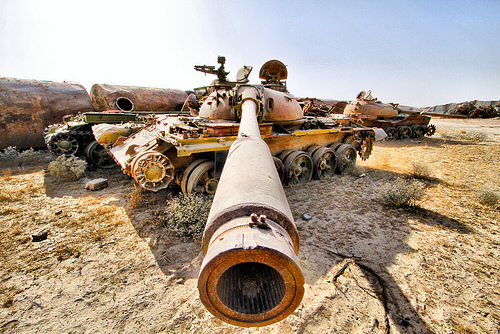Afghanistan is Broke, US Drowning in Debt – So What About a War Ceiling?

Please note that we are not authorised to provide any investment advice. The content on this page is for information purposes only.
With all the debate in the United States over raising its debt ceiling, politicians and lawmakers are once again fighting over national spending. Democrats are sore that the US$2.4 trillion in savings will not include any mandated tax increases, while the Republicans are worried about the US$350 billion cut in the defense budget. Why is the United States perpetually policing the world at the expense of the American people and global markets?
With all the debate in the United States over raising its debt ceiling, politicians and lawmakers are once again fighting over national spending. Democrats are sore that the US$2.4 trillion in savings will not include any mandated tax increases, while the Republicans are worried about the US$350 billion cut in the defense budget. Why is the United States perpetually policing the world at the expense of the American people and global markets?
The US debt ceiling negotiations kept nations and financial markets on their toes over the course of the past few weeks. As US President Barack Obama said in his address to the American nation,
[quote] “Debt negotiations have held our economy captive to Washington politics once again … for all the intrigue and drama that has taken place on Capitol Hill right now, I am confident that common sense and cooler heads will prevail.” [/quote]Meanwhile, war torn Afghanistan is facing a deepening financial crisis that requires an estimated US$820 million in bailout money. Yet, the country is as corrupt as it is bankrupt. Although the war-torn country’s largest bank nearly collapsed last September, the government of Hamid Karzai and international stakeholders are still splitting hairs over how to raise funds and confidence over the intended bailout vision, as well as how to deal with its former leaders and rebels who siphoned off millions of dollars, and plenty of illegal gemstones and timber from Afghanistan to the outside world.
After a decade of US-led war in Afghanistan, US officials are still determined to keep its troops stationed there – amid heavy defense budget cuts and declining public support. Why is the US bent on throwing more money (which they do not have) at defense?
Growing opposition towards the war stems from the high costs involved, in both monetary sense and in terms of lives. Since the Afghan war began a decade ago, approximately 1,600 American soldiers have been killed and 12,000 wounded. Through the end of the year, the war is expected to incur a bill of US$1.29 trillion, combined with the cost of military operations in Iraq. This year alone, US$119 billion will be spent in Afghanistan.
Could that money have been better spent to avoid the current debt crisis in the US?
Indeed, there seems to be a quiet hesitance about funding a war programme during a time of economic distress. As Senator Joe Manchin said,
[quote] “We can no longer, in good conscience, cut services and programmes at home, raise taxes or lift the debt ceiling in order to fund nation-building in Afghanistan. The question the President faces is quite simple: Will we choose to rebuild America or Afghanistan? In light of our nation’s fiscal peril, we cannot do both.” [/quote]Many leading economists agree on the effects of the economics of war, and it is not only the American nation that has to pay for these ugly outcomes.
A study by the Congressional Budget Office revealed that the price of war would amount to US$2.4 trillion through 2017, averaging out to a total cost of US$7,973 per US citizen. Yet, this figure does not include interest payments on the debt, which amounts to an additional US$700 billion.
According the Nobel laureate Joseph Stiglitz and Havard economist Linda Bilmes, the amount spent on war could have been better channeled towards the recovering US economy. They explain,
[quote] “The money spent on Iraq could have been spent on schools, roads, or research. These investments yield return. As the private sector competes for funds with the government, private investment gets crowded out. As a result, output is lower and the forgone output could be as high as US$5 trillion.” [/quote]For the embattled Afghan nation, it stands to face substantial economic disruption when the war eventually winds down.
The war economy acts as Afghanistan single largest employer on the construction and supplies front. Suffice to say, the Afghan economy is also heavily dependent on the US, in the form of military expenditure and financial aid.
Experts have suggested that the withdrawal of troops would plunge Afghanistan into a period of “very slow” progress, where only a small percentage of Afghans have found suitable and sustainable employment in areas like public health and education.
Yet, even when the war ends, Americans will still be faced with the hefty bill for many years, argues William R. Keylor, international relations professor at Boston University.
[quote] “The total cost of the war, the longest in American history and one that was paid for by borrowing rather than by increased taxation, should not be measured solely by the costs of financing the troops and the extensive aid programs administered by the State Department. It should also include long-term costs of the war, primarily veterans’ benefits for the returning soldiers, who will require medical and mental health services for many years to come. Long after the last troops depart from the country, that hidden part of the bill will come due.” [/quote]




